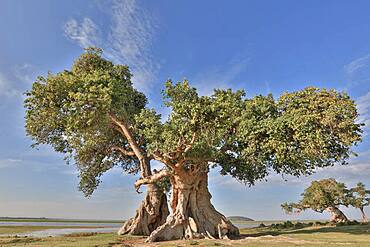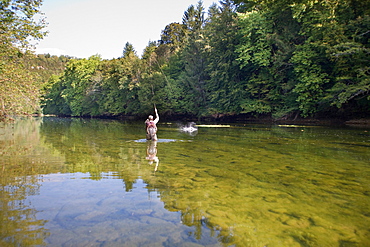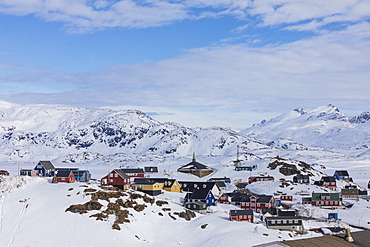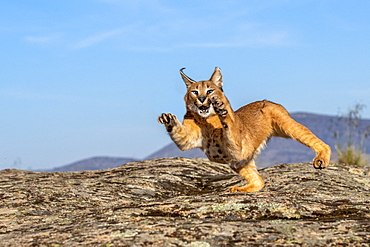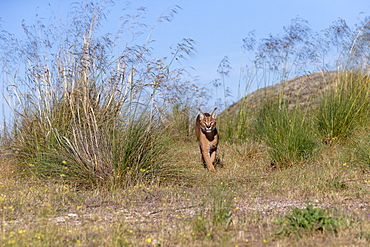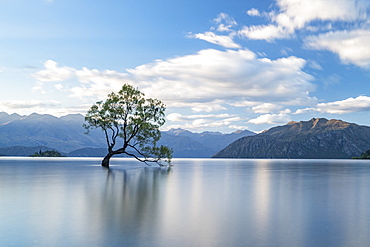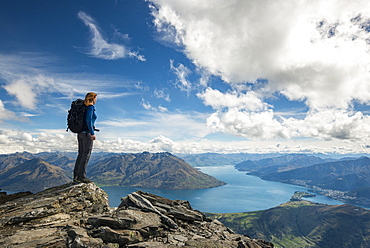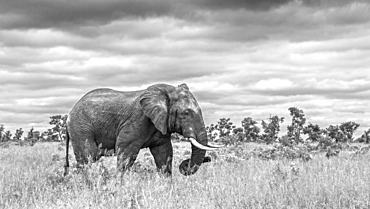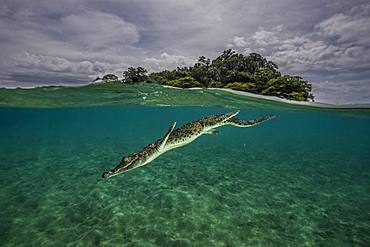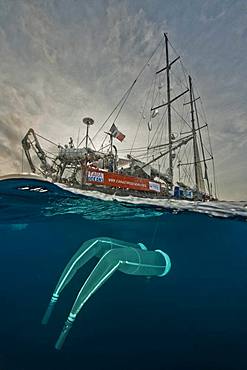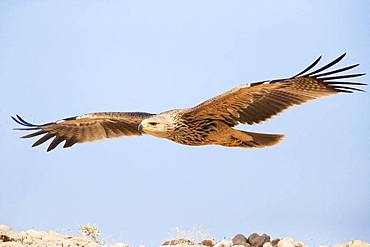Recent searches
Loading...
860-288710 - Plains zebra (Equus quagga burchellii) standing on a rock isolated in blue sky in Kruger National park, South Africa
860-288871 - Giant sycamore fig or sycamore (Ficus sycomorus) multicentennial, giant, Rift Valley, Ethiopia
860-288833 - Common crane (Grus grus) going through the rainbow storm, Valdenazar, Yebes, Guadalajara, Spain
860-288780 - Mount Pelvoux (3932m) and the Pelvoux glacier illuminated by a full moon night, hiker at the Glacier Blanc refuge (2580m), Vallouise valley, Brian?onnais region, Ecrins National Park, Hautes-Alpes, France
860-288787 - Southern white rhinoceros (Ceratotherium simum simum) in wide angle view in Hlane royal National park, Swaziland scenery
801-2962 - Only known statue of King Tutankhamun and wife, Luxor Temple, UNESCO World Heritage Site, Luxor, Thebes, Egypt, North Africa, Africa
1199-547 - Golden Labrador swimming with only head out of the water, United Kingdom, Europe
1311-174 - Grand Canyon view from the Tanner Trail with only the twilight glow as the light source, Grand Canyon National Park, UNESCO World Heritage Site, Arizona, United States of America, North America
860-288472 - Common Diuca Finch (Diuca diuca), Cobquecura, VIII région du Biobío, Chili
860-288416 - Cheetah (Acinonyx jubatus), occurs in Africa, walking in savanah, captive
860-288672 - Elephant (Loxodonta africana), Abu Camp, Okavango Delta, Botswana
860-288297 - Fly fishing on the Loue river, Franche-Comté, France
860-288408 - Caracal (Caracal caracal) , Occurs in Africa and Asia, Adult animal, Male, Jumping, Captive.
860-288381 - Caracal (Caracal caracal) , Occurs in Africa and Asia, Adult animal, Male, jumping on rock, Captive.
860-288424 - Cheetah (Acinonyx jubatus), occurs in Africa, adult at sunset, captive
860-288263 - Alpine marmot ( Marmota marmota), curious, National Park Hohe Tauern, Austria
860-287988 - Split image of guide with snowmobile waiting the divers, only in springtime, when the hard winter slowly subsides, are the ice-cold waters suitable for divers who can dive around a iceberg that floats in crystal-clear water, Tasiilaq, East Greenland
860-288421 - Cheetah (Acinonyx jubatus), occurs in Africa, one adult on rocks, captive
860-288268 - Alpine marmot ( Marmota marmota), curious, National Park Hohe Tauern, Austria
860-288666 - Elephant (Loxodonta africana), Abu Camp, Okavango Delta, Botswana
860-288265 - Alpine marmot ( Marmota marmota), with spreaded arms, National Park Hohe Tauern, Austria
860-288276 - Common Cuttlefish (Sepia officinalis) spitting ink under the surface at dusk, Miseno, Napoli, Italy, Tyrrhenian Sea
860-288299 - Fly fishing on the Loue river, Presentation of a wild trout (Salmo trutta fario), Franche-Comté, France
860-288079 - Azure-winged magpie (Cyanopica cyanus) perched in a tree, Spain
860-288395 - Caracal (Caracal caracal) , Occurs in Africa and Asia, Adult animal, Male, Walking on rock, Captive.
860-288411 - Cheetah (Acinonyx jubatus), occurs in Africa, portrait, captive
860-287950 - Cheetah (Acinonyx jubatus), on rock, Private reserve, South Africa
860-288393 - Caracal (Caracal caracal) , Occurs in Africa and Asia, Adult animal, Male, Jumping, Running, Captive.
860-288670 - Elephant (Loxodonta africana), Abu Camp, Okavango Delta, Botswana
860-288092 - corn Bunting (Emberiza calandra) perched on top of a tree, Spain
860-288388 - Caracal (Caracal caracal) , Occurs in Africa and Asia, Adult animal, Male, Walking on rock, Captive.
860-288011 - The small village of Tasiilaq during winter it can only be reached with helicopter, East Greenland
860-288266 - Alpine marmot ( Marmota marmota), curious, National Park Hohe Tauern, Austria
860-288278 - Common Cuttlefish (Sepia officinalis) under the surface at dusk, Miseno, Napoli, Italy, Tyrrhenian Sea
860-288241 - Grizzly bear (Ursus arctos horribilis) sitting in front of mountains, Katmai National Park, Alaska, USA
860-288406 - Caracal (Caracal caracal) , Occurs in Africa and Asia, Adult animal, Male, Walking on rock, Captive.
860-288089 - White Stork (Ciconia ciconia) nesting on top of an old car, Spain
860-288384 - Caracal (Caracal caracal) , Occurs in Africa and Asia, Adult animal, Male, walking in the grass, Captive.
860-288678 - Giant kingfisher (Megaceryle maximus), Chobe National Park, Botswana.
860-287957 - Cheetah (Acinonyx jubatus), on rock, Private reserve, South Africa
860-288379 - Caracal (Caracal caracal) , Occurs in Africa and Asia, Adult animal, Male, walking in the grass, Captive.
860-287774 - One large bull African elephant, Loxodonta africana, grassland, Masai Mara, Kenya
860-288064 - Mountain Hare (Lepus timidus). A Mountain Hare in the Cairngorms National Park, UK
860-288378 - Caracal (Caracal caracal) , Occurs in Africa and Asia, Adult animal, Male, jumping on rock, Captive.
860-288294 - Fly fishing on the Loue river, Ornans, Doubs, Franche-Comté, France
860-288671 - Elephant (Loxodonta africana), Abu Camp, Okavango Delta, Botswana
860-288669 - Elephant (Loxodonta africana), Abu Camp, Okavango Delta, Botswana
860-288668 - Elephant (Loxodonta africana), Abu Camp, Okavango Delta, Botswana
860-288390 - Caracal (Caracal caracal) , Occurs in Africa and Asia, Adult animal, Male, Walking on rock, Captive.
860-288510 - Wanaka Ttree, lonely tree in water, Lake Wanaka, South Island, New Zealand
860-288505 - Woman on top of a mountain, view on Lake Wakatipu with city of Queenstown, Remarkables mountain range, South Island, New Zealand
860-288476 - Kelp Gull (Larus dominicanus), adult having recovered a fish, Cobquecura, VIII Region of Biobío, Chile
860-288420 - Cheetah (Acinonyx jubatus), occurs in Africa, one adult on rocks, captive
860-288387 - Caracal (Caracal caracal) , Occurs in Africa and Asia, Adult animal, Male, Jumping, Captive.
860-288397 - Caracal (Caracal caracal) , Occurs in Africa and Asia, Adult animal, Male, Walking on rock, Captive.
860-288394 - Caracal (Caracal caracal) , Occurs in Africa and Asia, Adult animal, Male, Jumping, Running, Captive.
860-288386 - Caracal (Caracal caracal) , Occurs in Africa and Asia, Adult animal, Male, Jumping, Running, Captive.
860-288391 - Caracal (Caracal caracal) , Occurs in Africa and Asia, Adult animal, Male, Jumping, Running, Captive.
860-288405 - Caracal (Caracal caracal) , Occurs in Africa and Asia, Adult animal, Male, Jumping, Captive.
860-288383 - Caracal (Caracal caracal) , Occurs in Africa and Asia, Adult animal, Male, Walking on rock, Captive.
860-288396 - Caracal (Caracal caracal) , Occurs in Africa and Asia, Adult animal, Male, Jumping, Running, Captive.
860-288389 - Caracal (Caracal caracal) , Occurs in Africa and Asia, Adult animal, Male, Jumping, Captive.
860-288423 - Cheetah (Acinonyx jubatus), occurs in Africa, walking in savanah, captive
860-288254 - Alpine marmot ( Marmota marmota), standing in front of a mountain, National Park Hohe Tauern, Austria
860-288300 - Fly fishing on the Loue river, Franche-Comté, France
860-288296 - Fly fishing on the Loue river, Presentation of a wild trout (Salmo trutta fario), Franche-Comté, France
860-288304 - Fly fishing on the Loue river, Franche-Comté, France
860-288272 - Alpine marmot ( Marmota marmota), in front of mountains, National Park Hohe Tauern, Austria
860-288262 - Alpine marmot ( Marmota marmota), curious and close-up, Wideangle, National Park Hohe Tauern, Austria
860-288244 - Grizzly bear (Ursus arctos horribilis) in front of mountains, Katmai National Park, Alaska, USA
860-288075 - Azure-winged magpie (Cyanopica cyanus) perched in a tree, Spain
860-288091 - Corn Bunting (Emberiza calandra) perched on a branch, England
860-288095 - Cuckoo (Cuculus canorus) perched on a tree, Spain
860-287994 - Spit image of a scuba diver diving close to an iceberg, only in springtime, when the hard winter slowly subsides, are the ice-cold waters suitable for divers who can dive around a iceberg that floats in crystal-clear water, Tasiilaq, East Greenland
860-287991 - Split image of scuba divers before to dive under the ice, only in springtime, when the hard winter slowly subsides, are the ice-cold waters suitable for divers who can dive around a iceberg that floats in crystal-clear water, Tasiilaq, East Greenland
860-287948 - Cheetah (Acinonyx jubatus), on rock, Private reserve, South Africa
860-287952 - Cheetah (Acinonyx jubatus), on rock, Private reserve, South Africa
860-287955 - Cheetah (Acinonyx jubatus), on rock, Private reserve, South Africa
860-287953 - Cheetah (Acinonyx jubatus), on rock, Private reserve, South Africa
860-287925 - African bush elephant Loxodonta africana walking in savannah in black and white in Kruger National park, South Africa
860-287770 - Red kite (Milvus milvus) in flight, Bellymack Kite Feeding Centre Dumfries Scotland
860-287781 - Male and lone muskox (Ovibos moschatus) on one of the archipelago islands at the bottom of Scoresby Sund, GreenlandIt must have arrived here in winter through the ice floe
860-287762 - Johngarthia planata on Clipperton Island
860-287732 - European Honey Buzzard (Pernis apivorus), adult male in flight, Campania, Italy
860-287633 - Hiker on the Tours du Lac, Lake Allos (2226 m) and in the background Mont Pelat (3051m), Haut-Verdon, Mercantour National Park, Alps, France
860-287444 - Tara Pacific expedition - november 2017 Saltwater crocodile (Crocodylus porosus) diving down near Garua Island, Kimbe Bay, Papua New Guinea
860-287545 - Hiker on the suspended footbridge of Spasimata on the GR 20, Cirque de Bonifatu, Corsica Regional Nature Park, Balagne, Corse-du-Sud, France
860-287640 - Tawny Owl (Strix aluco) hunting in flight under the stars at night, Salamanca, Castilla y León, Spain
860-287606 - Vallee de la Claree, Kuepfer's Buttercup (Ranunculus kuepferi) bed and hiker on the GR57, Nevache, Hautes-Alpes, France
860-287450 - Tara Oceans Expeditions - May 2011. Tara with deployed plancton nets. On "station", the boat is drifting without engine or sails. Tara Oceans, a unique expedition: Tara Oceans is the very first attempt to make a global study of marine plankton, a form of sea life that includes organisms as small as viruses and bacterias, and as big as medusas. Our goal is to better understand planktonic ecosystems by exploring the countless species, learning about interactions among them and with their environment. Marine plankton is the only ecosystem that is almost continuous over the surface of the Earth. Studying plankton is like taking the pulse of our planet. Recently, scientists have discovered the great importance of plankton for the climate: populations of plankton are affected very rapidly by variations in climate. But in turn they can influence the climate by modifying the absorption of carbon. In a context of rapid physico-chemical changes, for example the acidification observed today in the world's oceans, it is urgent to understand and predict the evolution of these particular ecosystems. Finally, plankton is an astonishing way of going back in time ? a prime source of fossils. Over the eons, plankton has created several hundred meters of sediment on the ocean floors. This allows us to go back in time, to the first oceans on Earth, and better understand the history of our biosphere. More than 12 fields of research are involved in the project, which will bring together an international team of oceanographers, ecologists, biologists, geneticists, and physicists from prestigious laboratories headed by Eric Karsenti of the European Molecular Biology Laboratory. Galapagos
860-287734 - Eastern Imperial Eagle (Aquila heliaca), juvenile in flight, Dhofar, Oman
860-287593 - Dromedary (Camelus dromedarius), Kata Tjuta, Centre Rouge, NT, Australia
860-287422 - Red deer (Cervus elaphus) stag standing in a meadow at sunset, England
860-287421 - Red deer (Cervus elaphus) stag walking in a meadow at sunset, England
860-287339 - Walnut tree between the hills, Langhirano, Emilia-Romagna, italy
860-287349 - White walnut tree, Infrared picture, Langhirano, Parma, Emilia-Romagna, Italy
860-287357 - Polar Bear( Ursus maritimus ) walking along a barrier island outside Kaktovik, Every fall, polar bears (Ursus maritimus) gather near Kaktovik on the northern edge of ANWR, Barter Island, Arctic National Wildlife Refuge, Alaska
860-287373 - Pale chanting goshawk (Melierax canorus), immature perched, Central Kalahari Game Reserve, Bostwana
860-287400 - Brown Bear (Ursus arctos) skirting a waterhole against the sky, Finland
860-287358 - Polar Bear( Ursus maritimus ),near the water edge along a barrier island outside Kaktovik, Every fall, polar bears (Ursus maritimus) gather near Kaktovik on the northern edge of ANWR, Barter Island, Arctic National Wildlife Refuge, Alaska

